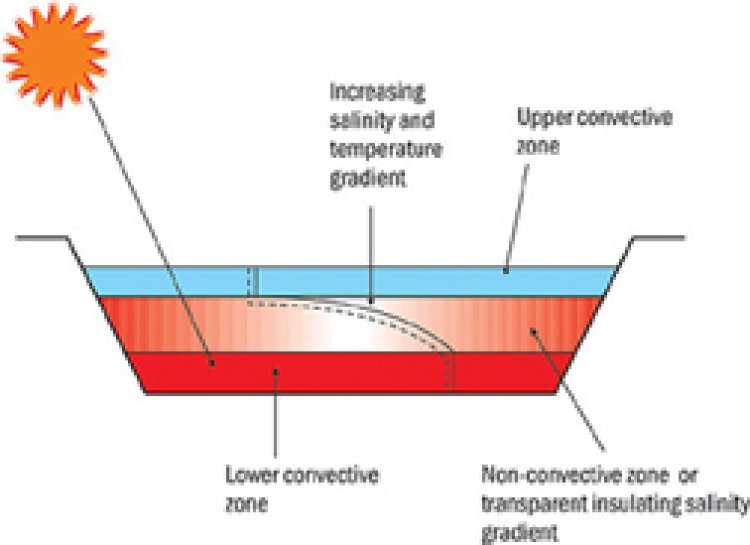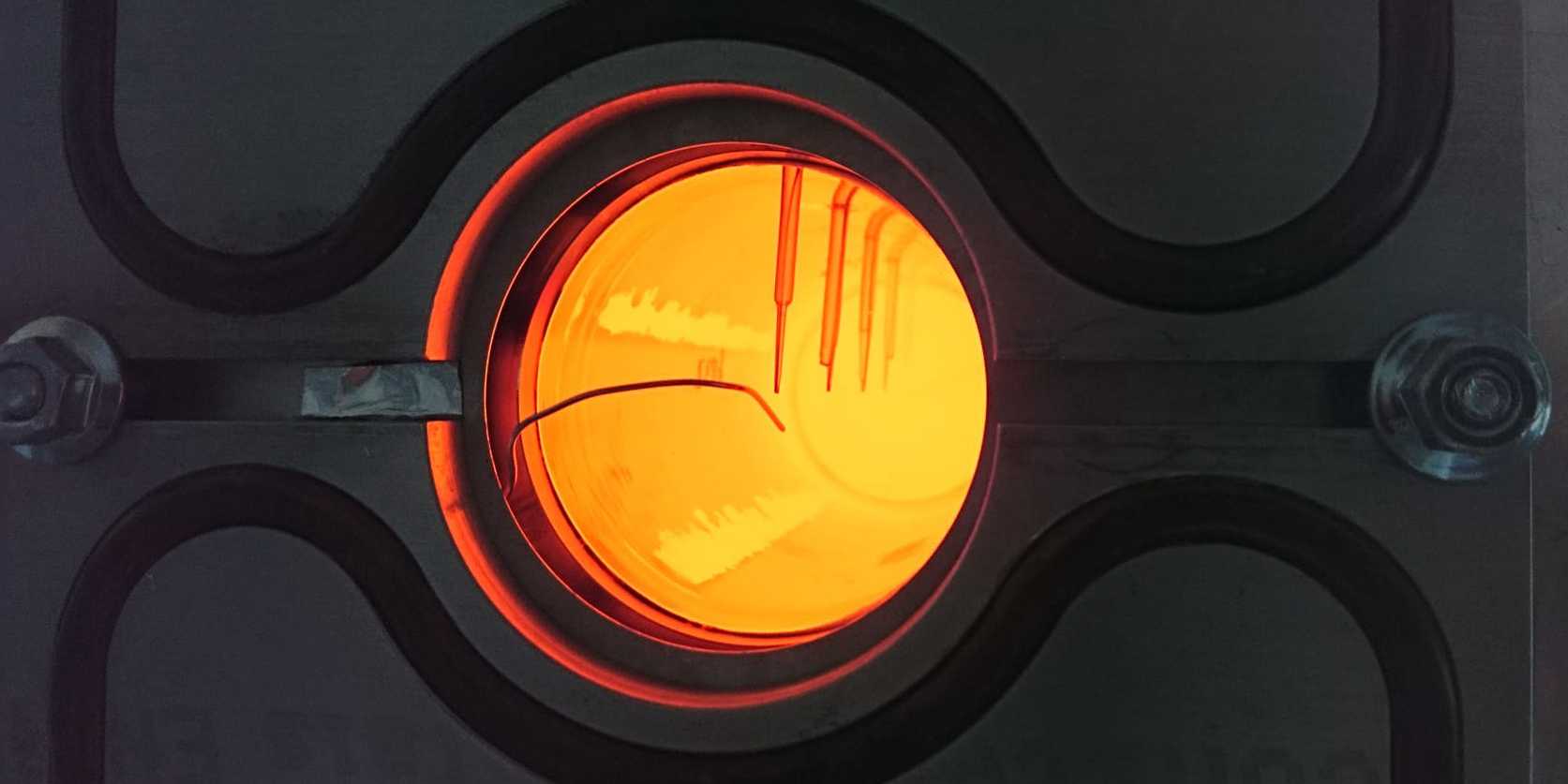Salt-gradient solar ponds Salt of the earth
Salt-gradient solar ponds Salt of the earth

Salt-gradient solar ponds
Salt of the earth
Here is a pond that contains heat in layers of varied temperature—the deeper you delve into it, the hotter it gets, seemingly defying a simple heat theory that makes hot-air balloons fly. But this is no wonder pond, nor does it fall outside any scientific
 |
| Concept of the salt-gradient solar pond |
premise. The pond is a large saline water body in which solar energy is trapped in the salt. The salt solution gets denser with depth, making it possible to maintain a concentrated layer of hot brine at the bottom. T ERI researchers built a salt-gradient solar pond near Bhuj in Gujarat and put it to a unique use— supply process heat to an enduser, for the first time in India.
The heat factory
Coming back to the heat theory, air or water, when heated, rise as they lose weight in the process. In an ordinary water body, when sunlight heats up the water, it rises to the surface and loses its heat to the atmosphere, keeping the water at nearly atmospheric temperature. The solar pond technology inhibits this phenomenon. With depth, the salt concentration increases, thereby creating a salinity or density gradient at the middle layer—the all-important NCZ (non-convective zone). This stable ‘gradient zone’ does not allow the less concentrated salt water from the upper convective zone at the top to move down and the densely concentrated salt water from the lower convective zone at the bottom to move up. The NCZ acts as a transparent insulator that lets sunlight reach the bottom where it remains entrapped, creating a storehouse of thermal energy in the form of hot brine.
The Bhuj experiment
 |
| The salt-gradient solar pond near Bhuj |
In wake of the looming threat from global warming and also the rising scarcity of fossil fuels, there has been an accentuated global call for maximizing the use of renewable energy. TERI researchers foresaw promising results in the indigenously developed salt-gradient solar ponds. The result was the construction of the Bhuj solar pond—an idea mooted by a group of scientists in 1983.
The project was sanctioned under the National Solar Pond Programme by the Ministry of Non-conventional Energy Sources in 1987 and completed in 1993 after a sustained collaborative effort by TERI, the Gujarat Energy Development Agency, and the GDDC (Gujarat Dairy Development Corporation Ltd). TERI provided all technical inputs and took up the complete execution of research, development, and demonstration. TERI operated and maintained this facility until 1996 before handing it over to the GDDC. The solar pond functioned effortlessly till the year 2000 when severe financial losses crippled GDDC. Subsequently, the Bhuj earthquake left the Kutch Dairy non-functional.
Scaling new heights
 |
| The Bhuj solar pond covered an area of 6000 aquare metres |
The Bhuj solar pond project stood out in many regards. The first-ever solar pond in India to have connected itself to an end-user – supplying industrial process heat to the Kutch Dairy – this pond, covering an area of 6000 square metres, was, at that time, the largest operating solar pond in the world. Avoiding use of imported membrane lining, the project developed a cost-effective, indigenous lining scheme, using locally mined clay and plastics. While the pond attained a record 99.8 °C under stagnation, stability of the salinity gradient was maintained even at such elevated temperatures. With only one injection diffuser on one side of the pond, the desired salinity profile was achieved even at the farthest end. More important, laboratory scale testing and the success in catering to actual user-demand have paved way for the commercial exploitation of the technology in India.
Carving a niche
 |
| Heat exchanger of the solar pond |
The hot brine – extracted from the bottom of the pond – is pumped through a shell-and-tube heat exchanger where it heats water up to a temperature of 70 °C. Further, this hot water was delivered to the Kutch Dairy plant to be used as pre-heated boiler feed water as well as for cleaning and washing. The entire exercise at the Bhuj solar pond successfully demonstrated the expediency of the technology by supplying 80 000 litres of hot water daily to the plant.
Applications/benefits
The Bhuj experiment significantly placed the solar pond option as a comparable alternative to technologies that are in use—fossil-fuel-fired process heating and solar flat plate collectors for water heating (Box 1).
|
The capital and operating costs of the technology are very much site- and application-specific. However, these are expected to be lower than the competing technologies. For example, the cost of heat energy from a solar pond is about 60% of the cost of energy from a flat plate solar water-heating system. Process innovation like clay– plastic–clay lining reduces the construction cost. With suitable government incentives, the technology may soon become one of the most viable solar energy options.



























